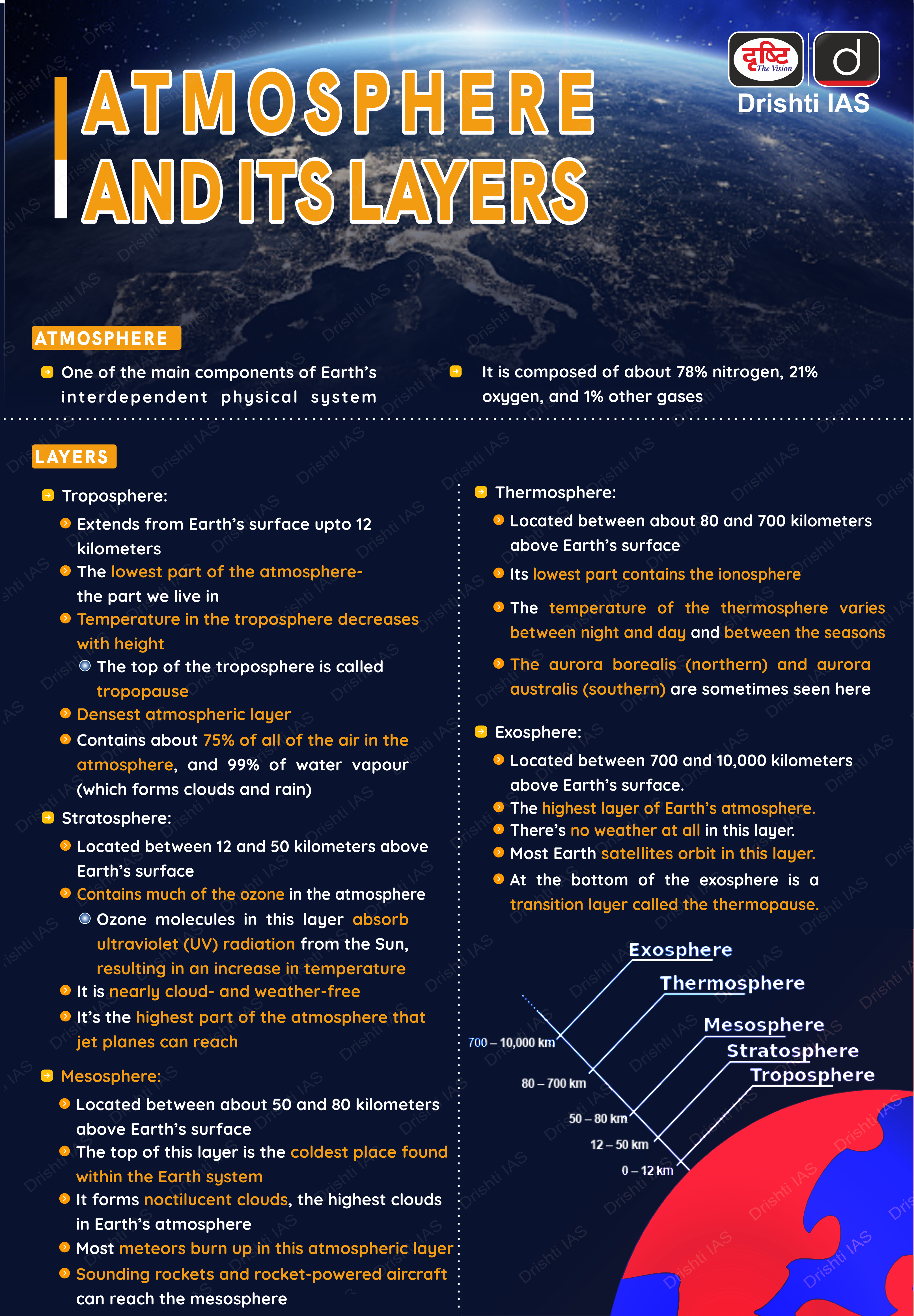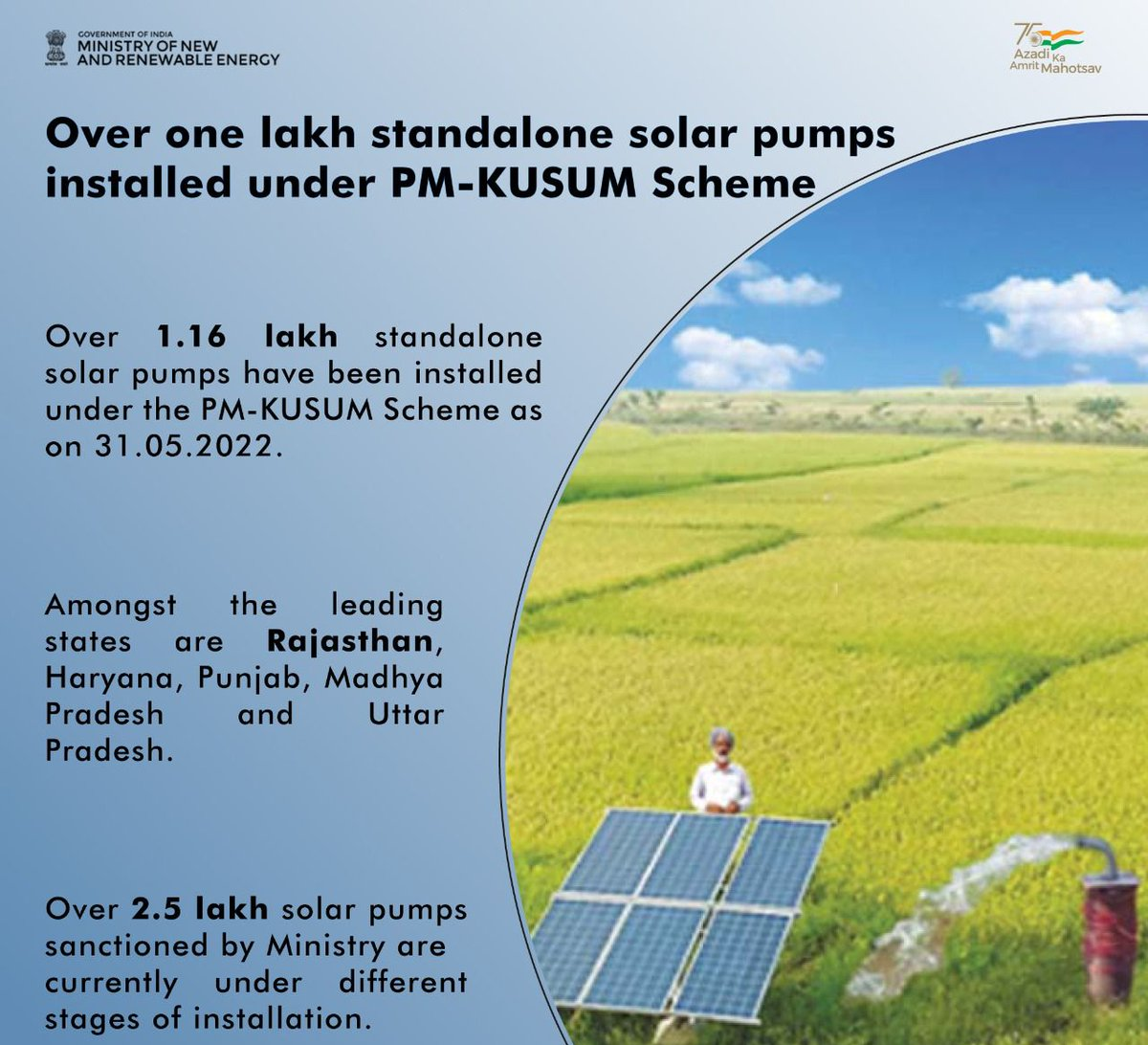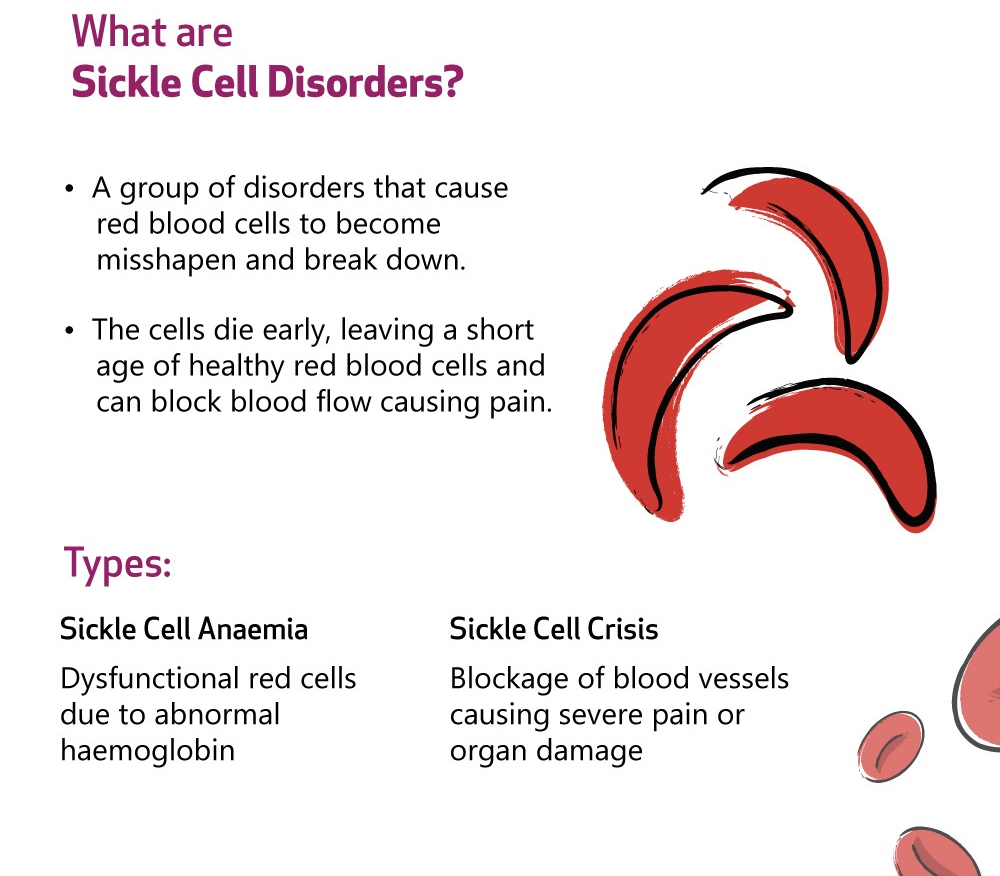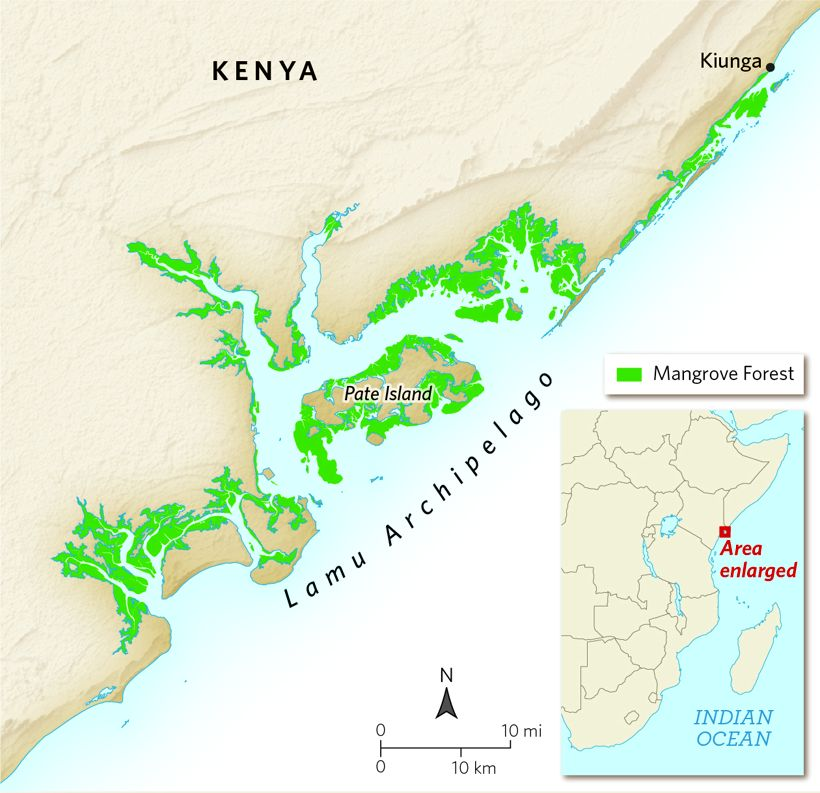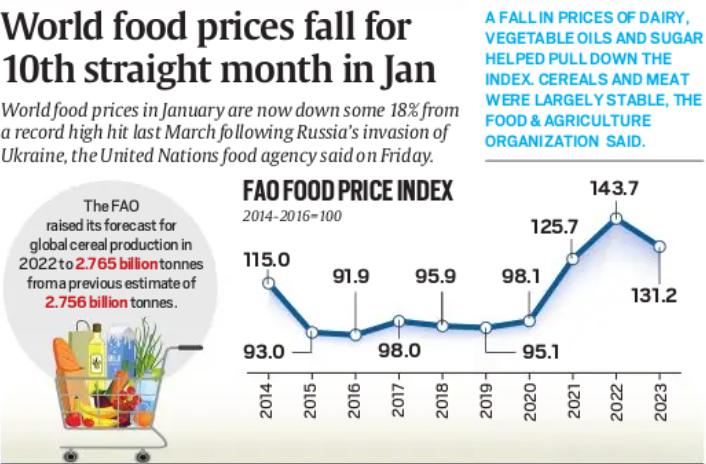Infographics
Indian Polity
No Bar on Contesting Two Seats in One Poll
Prelims: One Candidate One Constituency, Election Commission, Representation of the People Act.
Mains: Issue with a Candidate contests for two constituencies.
Why in News?
Recently, the Supreme Court has rejected a petition to bar candidates from contesting from more than one constituency in the general or assembly elections, calling it a matter of “parliamentary sovereignty” and “political democracy”.
- The plea had challenged the constitutionality of Section 33(7) of the Representation of Peoples Act, 1951, citing that it is unreasonable for creating extra burden on the public exchequer as by-elections will invariably follow because candidates have to give up one seat in case, they win on both the seats.
What is the Ruling?
- There is no relevant provision in the Representation of People Act (RPA) that may warrant an intervention by the court in this matter and this matter falls “squarely within the legislative domain” and “realm of policy”.
- It is parliament’s will that determines whether political democracy is furthered by granting such a choice.
- Contesting from multiple seats can be due to multiple reasons and there would be reasons which weigh in the balance and whether it furthers parliamentary democracy is something which is in the legislative domain.
- This issue lies in the domain of parliamentary sovereignty.
- It highlighted that parliament did amend the law in 1996 to restrict the number of constituencies to two whereas earlier, a candidate could contest from any number of seats.
- The parliament has already intervened in the past. The parliament can certainly step in again. At the relevant time when the parliament deems it appropriate to do it, they will do it. There is no question of inaction on anybody’s part.
What are the Provisions Related to Twin Candidature?
- As per Section 33(7) of the RPA (Representation of the People Act), 1951, one candidate can contest from a maximum of two constituencies.
- More constituencies were allowed until 1996 when the RPA was amended to set the cap at two constituencies.
- Since 1951, many politicians have used this factor to contest from more than one seat – sometimes to divide the opponent’s vote, sometimes to profess their party’s power across the country, sometimes to cause a ripple effect in the region surrounding the constituencies in favor of the candidate’s party and all parties have exploited Section 33(7).
What Issues Arise from Twin Candidature?
- Waste of Resources:
- Campaigning and contesting in multiple constituencies can be a waste of Resources and Money, both for the candidate and the government.
- After sacrificing one of the Constituencies, a by-election is immediately triggered, which again increases the burden on Public Exchequer.
- For example, in 2014, after PM Narendra Modi won both Vadodara and Varanasi, he vacated his seat in Vadodara, forcing a by-election there.
- Conflicts of Interest:
- Running in multiple constituencies can create conflicts of interest, as the candidate may not be able to devote equal time and attention to each of their constituencies.
- Paradoxical Provisions:
- Section 33(7) of the RPA leads to a situation where it would be negated by another section of the same Act – specifically, Section 70.
- While 33(7) allows candidates to contest from two seats, Section 70 bars candidates from representing two constituencies in the Lok Sabha/state. Assembly.
- Voter Confusion:
- Voters in different constituencies may be confused about which candidate is representing them, or which candidate they should vote for.
- Perception of Corruption:
- Running in multiple constituencies can also raise questions about the candidate's motivation and create the perception of corruption, as they may be seeking multiple seats in order to increase their chances of winning office.
- Threat to Democracy:
- Twin candidature can be seen as a threat to democracy, as it can undermine the principle of fair and equal representation.
Way Forward
- The Election Commission recommended amending Section 33(7) so as to allow one candidate to contest from only one seat.
- It did so in 2004, 2010, 2016 and in 2018.
- A system should be devised wherein if a candidate contested from two constituencies and won both, then he or she would bear the financial burden of conducting the subsequent by-election in one of the constituencies.
- The amount would be Rs 5 lakh for a Vidhan Sabha election and Rs 10 lakh for a Lok Sabha election.
- One person, one vote is the dictum that has been a founding principle of Indian democracy. Perhaps it is time to modify and expand that principle to “One person, one vote; one candidate, one constituency.
UPSC Civil Services Examination, Previous Year Questions (PYQs)
Prelims
Q. Consider the following statements: (2017)
- The Election Commission of India is a five-member body.
- The Union Ministry of Home Affairs decides the election schedule for the conduct of both general elections and bye-elections.
- Election Commission resolves the disputes relating to splits/mergers of recognised political parties.
Which of the statements given above is/are correct?
(a) 1 and 2 only
(b) 2 only
(c) 2 and 3 only
(d) 3 only
Ans: (d)
Mains
Q. Discuss the role of the Election Commission of India in the light of the evolution of the Model Code of Conduct. (2022)

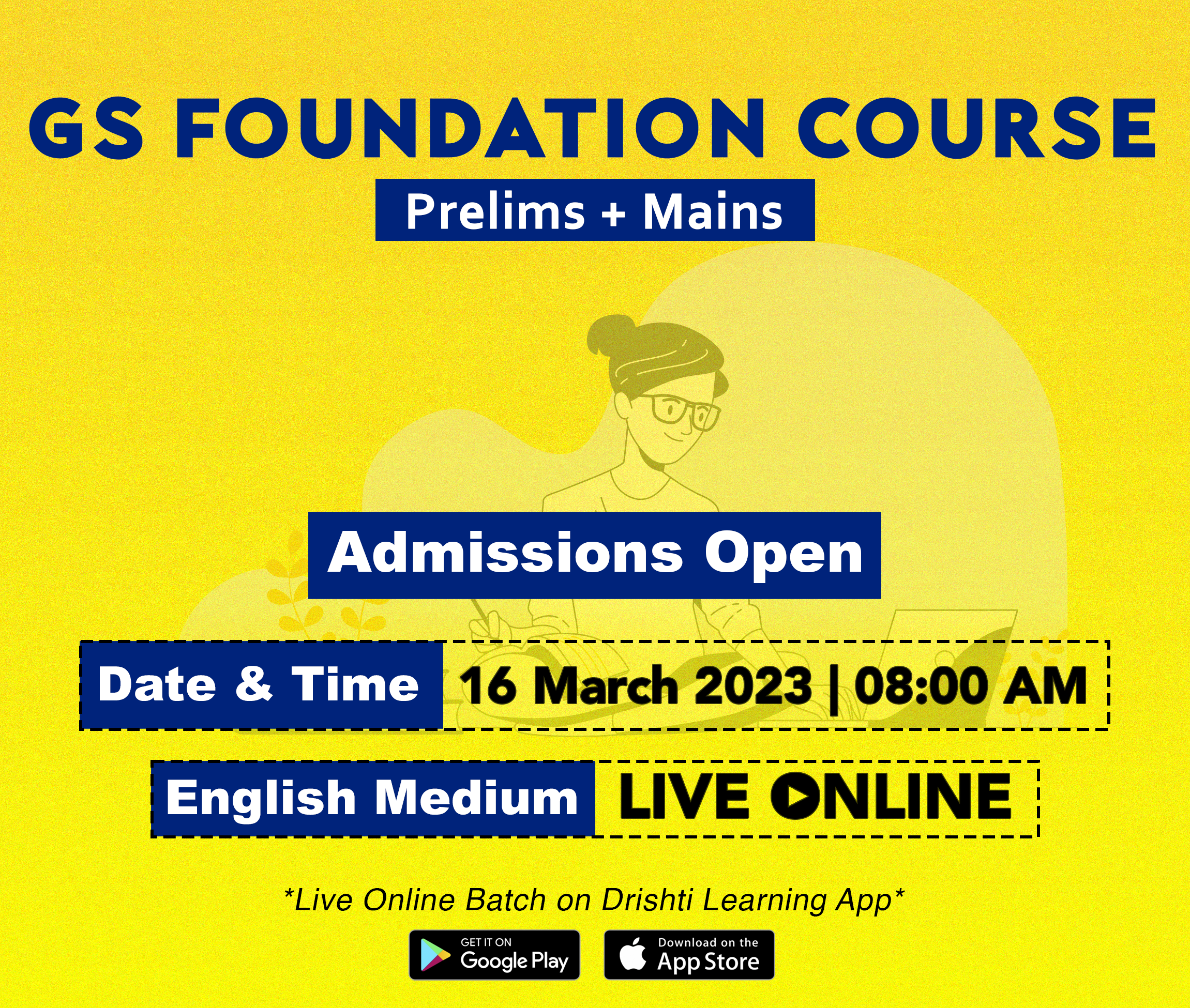
International Relations
China-Pakistan Economic Corridor
Prelims: China-Pakistan Economic Corridor, OBOR, BRI, POK, String of Pearls, Panama Canal, Indo-Pacific region.
Mains: China-Pakistan Economic Corridor and its implications on India.
Why in News?
Pakistan inaugurated a USD 2.7 billion nuclear reactor under China-Pakistan Economic Corridor (CPEC), providing some relief as the nation grapples with an energy crisis.
- This is a 1,100 megawatts capacity power plant, which will generate some of the nation’s cheapest electricity.
What is the Background
- Pakistan experienced nationwide power outages recently due to a breakdown in its national grid.
- The country has struggled with blackouts for years and is facing surging energy costs, low foreign-exchange reserves, and pressure on its government budget.
- Pakistan is in talks with the International Monetary Fund for a bailout in exchange for increased energy tariffs. The country’s foreign-exchange reserves fell to the lowest in nine years, as high fossil fuel costs put pressure on the government’s budget.
What is CPEC?
- CPEC is a 3,000-km long route of infrastructure projects connecting China’s northwest Xinjiang Uygur Autonomous Region and the Gwadar Port in the western province of Balochistan in Pakistan.
- It is a bilateral project between Pakistan and China, intended to promote connectivity across Pakistan with a network of highways, railways, and pipelines accompanied by energy, industrial, and other infrastructure development projects.
- It will pave the way for China to access the Middle East and Africa from Gwadar Port, enabling China to access the Indian Ocean and in return China will support development projects in Pakistan to overcome the latter’s energy crises and stabilising its faltering economy.
- CPEC is a part of the Belt and Road Initiative.
- The BRI, launched in 2013, aims to link Southeast Asia, Central Asia, the Gulf region, Africa and Europe with a network of land and sea routes.
What are the Challenges of CPEC for Pakistan and China?
- Pakistan:
- Regional Imbalances: CPEC is focused on certain areas and provinces in Pakistan, leading to concerns about regional imbalances in development and investment.
- Debt Trap: Pakistan's debt levels have become a concern due to the large scale of projects financed by loans from China and the ability to repay these loans. China is now Pakistan's largest creditor, with Pakistan owing 27.4% of its total external debt to China in 2021, according to the IMF.
- Environmental Impacts: The large-scale infrastructure projects that make up CPEC could have negative environmental impacts, including deforestation, loss of biodiversity, and air and water pollution.
- Social Implications: The development of the project has led to concerns about the displacement of local communities and the loss of their traditional livelihoods, as well as the impact of increased migration and population pressures in the region.
- Sovereignty Concerns: Some have raised concerns about China's increasing influence in Pakistan and the potential for the project to compromise the country's sovereignty and independence.
- China:
- Security Concerns: The security of Chinese workers and the stability of the region pose a major challenge for the success of CPEC.
- Political Opposition: There has been opposition from certain political parties and groups who are concerned about the perceived lack of transparency and the potential long-term implications of the project on Pakistan's sovereignty.
What are CPEC’s Implications for India?
- India’s Sovereignty:
- India has continuously opposed the project since it passes through the Pakistan-occupied Kashmir territory of Gilgit-Baltistan – a claim opposed by Pakistan.
- The corridor is also perceived to be an alternative economic road link for the Kashmir Valley lying on the Indian side of the border.
- If CPEC proves a success, will further consolidate the region’s perception as internationally recognised Pakistani territory, diminishing India’s claim over the 73,000 sq km piece of land which is home to more than 1.8 million people.
- Chinese Control Over Trade Via Sea:
- Major US ports on the East Coast depend on the Panama Canal to trade with China.
- Once CPEC becomes fully functional, China will be in a position to offer a ‘shorter and more economical’ trade route to most North and Latin American enterprises, giving China the power to dictate the terms by which the international movement of goods will take place between the Atlantic and the Pacific oceans.
- Chinese String of Pearls:
- With an existing presence in Chittagong port (Bangladesh), Hambantota port (Sri Lanka), Port Sudan (Sudan), Maldives, Somalia and Seychelles, a control of Gwadar port establishes complete dominance of the Indian ocean by the Communist nation.
- Stronger BRI and Chinese Dominance in Trade Leadership:
- China’s BRI project that focuses on the trade connectivity between China and the rest of Eurasia through a network of ports, roads and railways has been often seen as China’s plan to dominate the region politically. CPEC is one giant step in the same direction.
Way Forward
- India should leverage its strategic location and further work with like-minded countries to participate in multilateral initiatives like,
- The Asia-Africa Growth Corridor is an India-Japan economic cooperation agreement, it can provide India great strategic benefits and counter China.
- Blue Dot network, which is being promoted by the USA.
- It is a multi-stakeholder initiative to bring together governments, the private sector and civil society to promote high-quality, trusted standards for global infrastructure development.
- It is expected to serve as a globally recognized evaluation and certification system for roads, ports and bridges with a focus on the Indo-Pacific region.
UPSC Civil Services Examination Previous Year Question (PYQ)
Prelims
Q. Belt and Road Initiative’ is sometimes mentioned in the news in the context of the affairs of (2016)
(a) African Union
(b) Brazil
(c) European Union
(d) China
Ans: (d)
Exp:
- Proposed in 2013, the ‘Belt and Road Initiative (BRI)’ is an ambitious programme of China for connecting Asia with Africa and Europe via land and maritime networks.
- The BRI comprises a Silk Road Economic Belt – a trans-continental passage that links China with Southeast Asia, South Asia, Central Asia, Russia and Europe by land – and a 21st century Maritime Silk Road, a sea route connecting China’s coastal regions with Southeast and South Asia, South Pacific, Middle East and Eastern Africa, all the way to Europe. Therefore, option (d) is the correct answer.
Mains
Q1. The China-Pakistan Economic Corridor (CPEC) is viewed as a cardinal subset of China’s larger ‘One Belt One Road’ initiative. Give a brief description of CPEC and enumerate the reasons why India has distanced itself from the same. (2018)
Q2. China and Pakistan have entered into an agreement for the development of an economic corridor. What threat does this pose for India’s security? Critically examine. (2014)
Q3. “China is using its economic relations and positive trade surplus as tools to develop potential military power status in Asia”. In the light of this statement, discuss its impact on India as her neighbour. (2017)

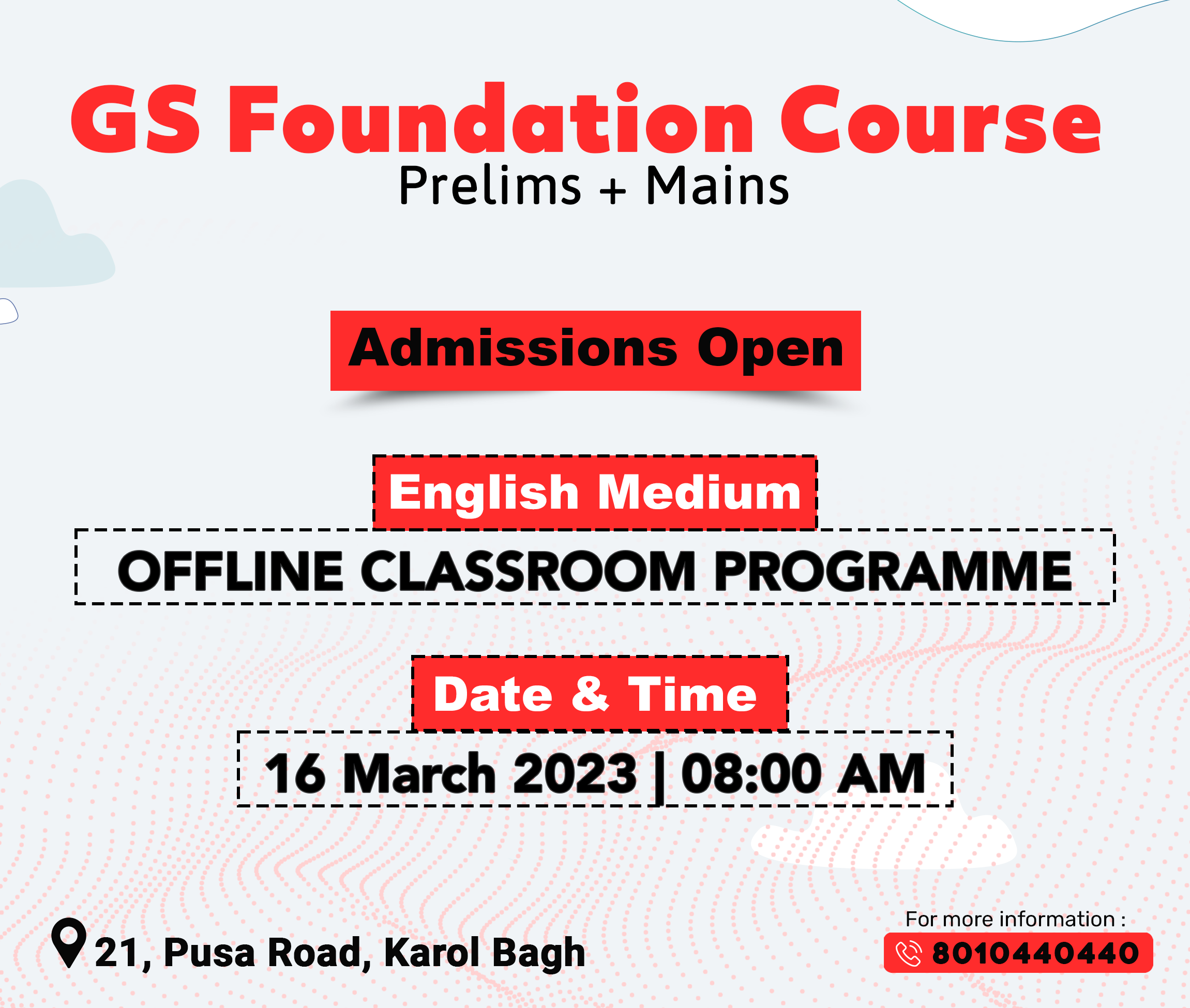
Agriculture
PM KUSUM
Prelims: PM KUSUM, Off-grid solar pumps, Solar Energy, Renewable Energy, Empowerment of Agriworkers.
Mains: PM KUSUM, its Significance and Challenges.
Why in News?
The Ministry of New and Renewable Energy (MNRE) has extended the deadline to install 30,000 MW solar power capacity in rural India to March 2026 under PM-KUSUM (Pradhan Mantri Kisan Urja Suraksha Evam Uttham Mahabhiyan).
What is PM KUSUM?
- About:
- The PM-KUSUM was launched by the MNRE in 2019, in order to endow installation of off-grid solar pumps in rural areas and reduce dependence on grid, in grid-connected areas.
- Components:
- 10,000 MW of decentralized ground-mounted grid-connected renewable power plants.
- Installation 20 lakh solar-powered agriculture pumps
- Converting 15 lakh agriculture pumps, already connected to the grid, into solar.
- Objective:
- It aims to enable farmers to set up solar power generation capacity on their arid lands and to sell it to the grid.
- It also seeks to increase the income of farmers by allowing them to sell surplus solar power to the grid.
- Achievements:
What is the Significance of the Scheme?
- Increase Access to Energy:
- It incentivises the farmers to sell surplus solar energy to the states, which in turn will augment their income.
- The scheme is expected to increase access to electricity in rural areas and provide a reliable source of energy for agriculture and other rural activities
- Contain Climate Catastrophe:
- If farmers are able to sell surplus power, they will be incentivised to save power and, in turn, it will mean the reasonable and efficient use of groundwater.
- Also, expansion of the irrigation cover by providing decentralized solar-based irrigation and moving away from polluting diesel.
- When implemented fully, PM-KUSUM will lead to reducing carbon emissions by as much as 32 million tonnes of CO2 per annum.
- Employment and Empowerment:
- The scheme is expected to create job opportunities in the installation, maintenance, and operation of solar power projects.
- The scheme is expected to empower rural communities by giving them control over their own energy generation and distribution.
What are the Associated Challenges?
- Financial and Logistics Issue:
- The cost of setting up solar power projects can be high, and some farmers may not have access to the necessary financing.
- There is a matter of domestic availability of equipment itself. While pumps are not a challenge for domestic suppliers, the availability of solar pumps is still an issue.
- Depleting Water Tables:
- Due to power subsidies, the recurring cost of electricity is so low that farmers keep on pumping water and the water table is going down.
- In a solar installation, it becomes a more difficult job to upgrade to higher capacity pumps in case the water table falls because one will have to add new solar panels which are expensive.
- Regulatory Barriers and Stability:
- There may be regulatory barriers that prevent the smooth implementation of the scheme, such as restrictions on the connection of solar power projects to the grid.
- Integrating decentralized solar power projects into the grid may pose technical challenges and stability issues, which need to be addressed.
Way Forward
- Consensus between the Centre and States is the key to the success of this decentralised solar power scheme. Any reform in India’s power space cannot take place unless there is consensus between the Centre, States and stakeholders.
- Apart from switching to solar power, farmers should also switch over to drip irrigation mode which saves water and power with increased crop output.
- For effective implementation and serious participation by stakeholders, the scheme should be more attractive in terms of benchmark prices in view of the challenges on account of higher costs of implementation and comprehensive maintenance.
UPSC Civil Services Examination Previous Year Question (PYQ)
Prelims
Q. Consider the following statements: (2016)
- The International Solar Alliance was launched at the United Nations Climate Change Conference in 2015.
- The Alliance includes all the member countries of the United Nations.
Which of the statements given above is/are correct?
(a) 1 only
(b) 2 only
(c) Both 1 and 2
(d) Neither 1 nor 2
Ans: (a)
Exp:
- India and France launched the International Solar Alliance (ISA) to boost solar energy in developing countries.
- It was launched at the United Nations Climate Change Conference in Paris in November 2015 by the Indian Prime Minister and French President. Its secretariat is located in Gurugram, India. Hence, statement 1 is correct.
- At initial stage ISA was opened to membership of countries lying fully or partly between the Tropics of Cancer and Capricorn (torrid zone).
- In 2018, the membership of ISA was opened for all the UN members. However, all the member countries of the UN are not its members. Hence, statement 2 is not correct.
- Currently, 80 countries have signed and ratified the ISA Framework Agreement while 98 countries have signed the ISA Framework Agreement. Therefore, option (a) is the correct answer.
Mains
Q. India has immense potential of solar energy though there are regional variations in its developments. Elaborate (2020)

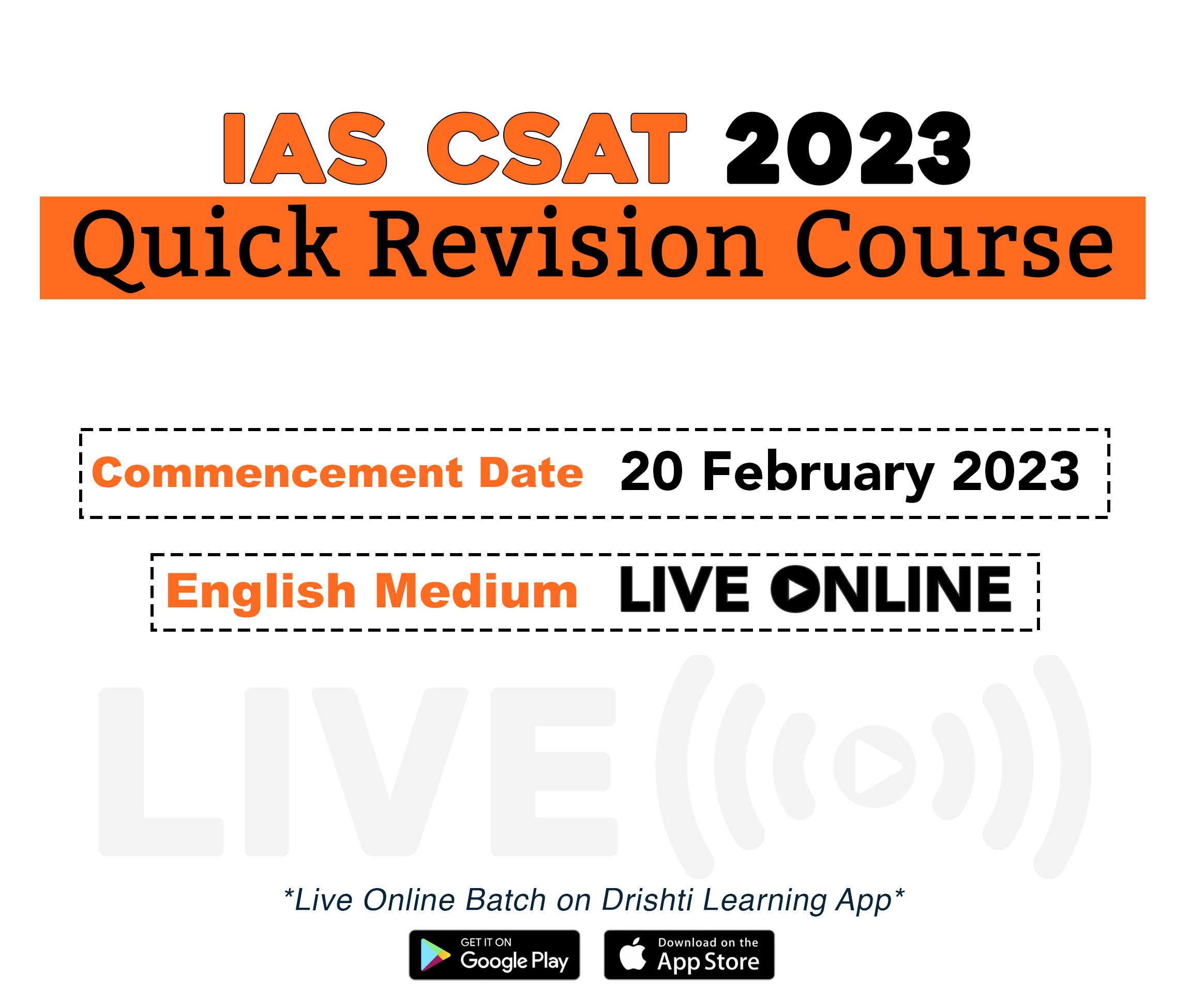
Governance
Zero-Draft of Pandemic Treaty
Prelims: Zero-Draft of Pandemic Treaty, WHO, Covid-19, Pathogen Access and Benefit-Sharing system, IHR.
Mains: Challenges Posing Risk to the Health Sector.
Why in News?
Recently, the World Health Organization’s (WHO) has published a ‘Zero-Draft’ of the Pandemic Treaty, aiming to bring in Global and National-Level Pandemic Preparedness.
- The treaty aims to address the challenges posed by pandemics and other global health emergencies.
- The zero-draft of the pandemic treaty was established based on recognising the catastrophic failure of the international community in showing solidarity and equity in response to the Covid-19 Pandemic.
What are the Principal Components of the Draft?
- Global Cooperation:
- It calls for increased global coordination and cooperation in the preparation for and response to pandemics and other global health emergencies.
- Strengthening of Health Systems:
- It emphasizes the need to strengthen health systems in all countries, particularly in low- and middle-income countries, to ensure they are better prepared to respond to pandemics and other global health emergencies.
- Investment in Research and Development:
- It calls for improved access to essential health technologies, such as vaccines, diagnostics, and treatments, during pandemics and other global health emergencies.
- It calls for increased investment in research and development of health technologies, particularly for diseases that pose a significant threat to global health.
- Transparency in Sharing of Information:
- It calls for increased transparency and sharing of information about pandemics and other global health emergencies, including data on the spread of diseases and the effectiveness of interventions.
- Pathogen Access and Benefit-Sharing System:
- The constitution of a PABS has been constituted under the WHO, making Genomic sequences of all pathogens with pandemic potential to be shared on an “equal footing” in the system.
- The PABS system is an important tool for ensuring the responsible and equitable use of pathogens and their genetic resources in the research and development of new medicines and vaccines, while also recognizing the rights and interests of the countries and communities that provide these resources.
- The constitution of a PABS has been constituted under the WHO, making Genomic sequences of all pathogens with pandemic potential to be shared on an “equal footing” in the system.
- Addressing Gender Disparities:
- In addressing gender disparities in the healthcare workforce, the draft aims to “ensure meaningful representation, engagement, participation and empowerment of all health and care workers” by stressing equal pay and addressing barriers specific to women in taking leadership roles.
What is the Existing Framework for Global Health Cooperation?
- The International Health Regulations (IHR), is an instrument of international law that is legally-binding on 196 countries including India.
- It aims for international collaboration to prevent, protect against, control, and provide a public health response to the international spread of disease.
- It provides an overarching legal framework that defines countries’ rights and obligations in handling public health events and emergencies that have the potential to cross borders.
- IHR empowers the WHO to act as the main global surveillance system. The Regulations also outline the criteria to determine whether or not a particular event constitutes a PHEIC (Public Health Emergency of International Concern.
What are the Challenges to the Healthcare Sector Globally?
- Lack of Access to Healthcare:
- Despite advances in medical technology, many populations around the world still lack access to basic healthcare services, particularly in low- and middle-income countries.
- As populations around the world age, there is increasing demand for long-term care services, which are often expensive and not covered by traditional health insurance.
- Healthcare Infrastructure:
- Public health data and infrastructure are fragmented and lacking any global standard causing a major concern regarding quality and reliability of existing healthcare systems.
- Besides that, a large part of hospital expenditures is used to correct preventable medical mistakes or infections that people catch in hospitals. Additionally, medical staff are in short supply.
- Public health data and infrastructure are fragmented and lacking any global standard causing a major concern regarding quality and reliability of existing healthcare systems.
- Affordability and Disparity:
- Healthcare can be expensive, and many individuals, particularly those in low- and middle-income countries, struggle to afford basic healthcare services.
- Despite advances in medical technology, significant inequalities in health outcomes persist globally, particularly for marginalized populations.
- Scarcity of Health Personnels:
- The healthcare sector faces shortages of trained and qualified health workers in many countries, particularly in low- and middle-income countries.
- India has 1 government doctor per 10,189 people (the WHO recommends a ratio of 1:1,000), indicating a shortage of 6,00,000 doctors.
- The healthcare sector faces shortages of trained and qualified health workers in many countries, particularly in low- and middle-income countries.
- Non-Communicable Diseases:
- Non-communicable diseases, such as heart disease, stroke, cancer, and diabetes, are becoming increasingly common and place a significant burden on healthcare systems.
UPSC Civil Services Examination, Previous Year Question (PYQ)
Q. What is the basic principle behind vaccine development? How do vaccines work? What approaches were adopted by the Indian vaccine manufacturers to produce COVID-19 vaccines? (2022)

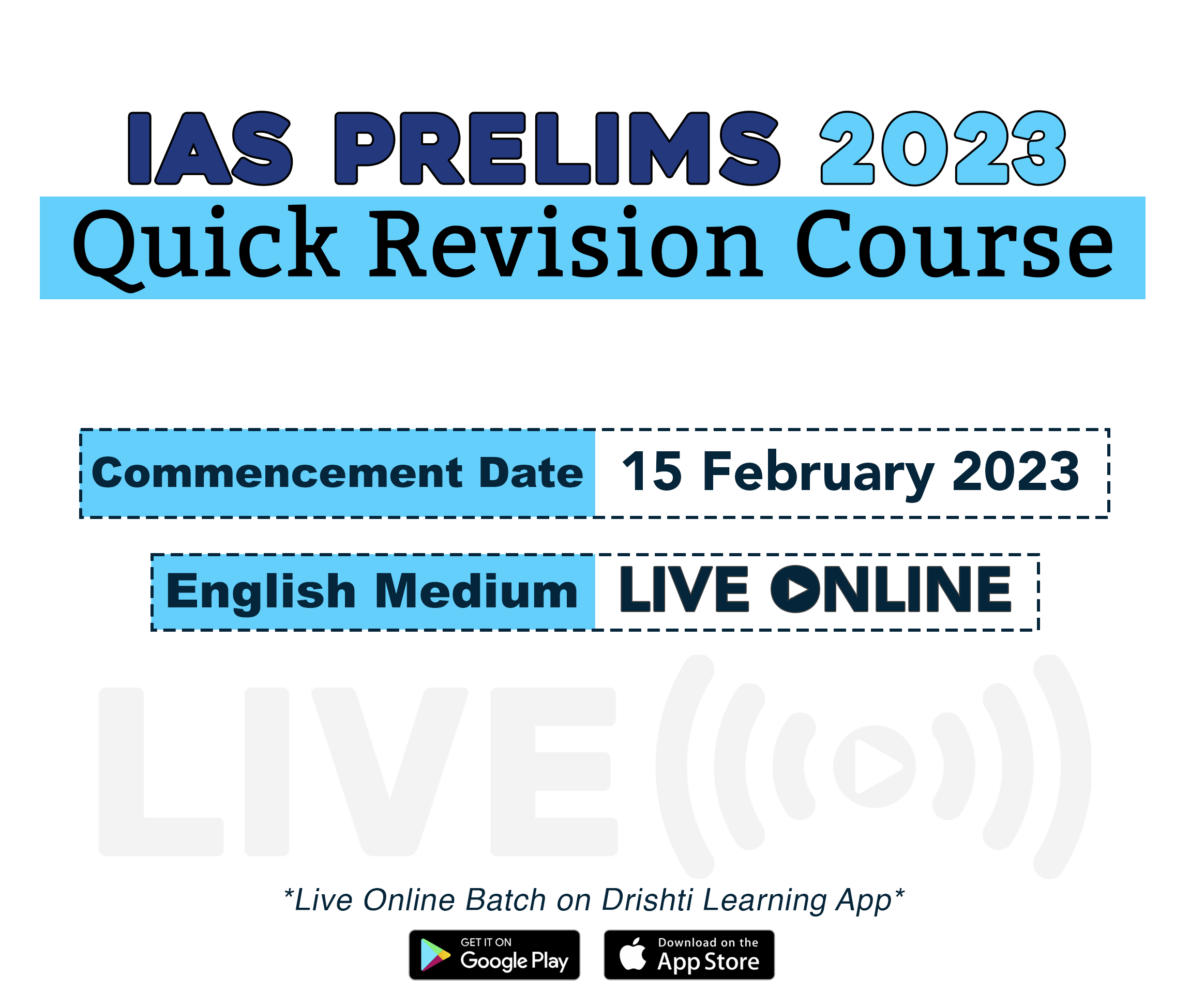
Indian Heritage & Culture
Tourism Working Group in Rann of Kutch
For Prelims: India’s G20 presidency, Rann of Kutch, UNESCO World heritage site, Dholavira, World Travel and Tourism Council, Swadesh Darshan Scheme, Draft National Tourism Policy 2022, Dekho Apna Desh Initiative, National Green Tourism Mission, Global Investors’ Summit.
For Mains: Status of the Tourism Sector in India, Challenges Related to the Tourism Sector, Government Initiatives Related to Tourism Development, G20 and Tourism.
Why in News?
As part of India’s G20 presidency, Gujarat will host the first Tourism Working Group (TWG) meeting in the state’s Rann of Kutch from 7 to 9 February 2023.
- Rural and Archaeological tourism will be the focus area of Tourism. Also, Dholavira, which is a UNESCO World heritage site, will be the second spot for foreign delegates.
How is the G20 Emphasizing Interventions in the Tourism Sector?
- In the G20 Presidency of India, there are 5 interrelated priority areas for tourism. Accordingly, thrust will be on these five priority areas:
- Greening of the Tourism sector
- Harnessing the power of digitisation
- Empowering youth with skills
- Nurturing tourism MSMEs/ startups
- Rethinking the strategic management of destinations.
- Also, one of the priorities through the G20 platform is to reach a consensus on how the Sustainable Development Goals (SDG) will be achieved by 2030.
- As a part of this, there will be emphasis on sustainable tourism which is important not only for the environment but also to create opportunities for local enterprise.
- The different places chosen for the G20 events will encompass different flavors like rural tourism (Ladpura Khas village, MP), archaeological tourism (Dholavira), and ecotourism(Khonoma Village,Nagaland) etc.
- Along with this, 3 mega tourism related events are being organized to take advantage of the G20 Presidency. These include Global Investors’ Summit in April 2023, MICE Convention and Meeting of World Tourism CEOs Forum.
What is the Status of the Tourism Sector in India?
- About:
- India is known for its diverse cultural heritage, rich history, and natural beauty, which attract millions of domestic and international tourists each year.
- India offers a wide range of tourism options, including eco-tourism, cruise trips, business travel, sports tourism, educational tourism, rural tourism, archaeology tourism and medical tourism.
- Contribution to Economy:
- In 2021, India was ranked 6th by the World Travel and Tourism Council in terms of the total contribution of Travel & Tourism to the country's GDP.
- The sector contributed 5.8% to India's GDP in 2021 and created 32.1 million jobs, which is equivalent to 6.9% of total employment in the country.
- Challenges Related to the Tourism Sector:
- Infrastructural Constraints: India faces a shortage of quality tourist infrastructure, including accommodations, transportation, and recreational facilities, which limits its potential to attract more tourists.
- Safety and Security: India has been faced with concerns regarding the safety and security of tourists, especially for women. This can deter potential tourists from visiting the country.
- Lack of Standardization: India faces a lack of standardization across the tourism industry, including accommodations, tour operators, and transport providers, which can negatively impact the overall tourist experience.
- Government Initiatives Related to Tourism Development:
- Swadesh Darshan Scheme
- Draft National Tourism Policy 2022
- Dekho Apna Desh Initiative
- National Green Tourism Mission
UPSC Civil Services Examination, Previous Year Question (PYQ)
Q.1 How can the mountain ecosystem be restored from the negative impact of development initiatives and tourism? (2019)
Q.2 The states of Jammu and Kashmir, Himachal Pradesh and Uttarakhand are reaching the limits of their ecological carrying capacity due to tourism. Critically evaluate. (2015)

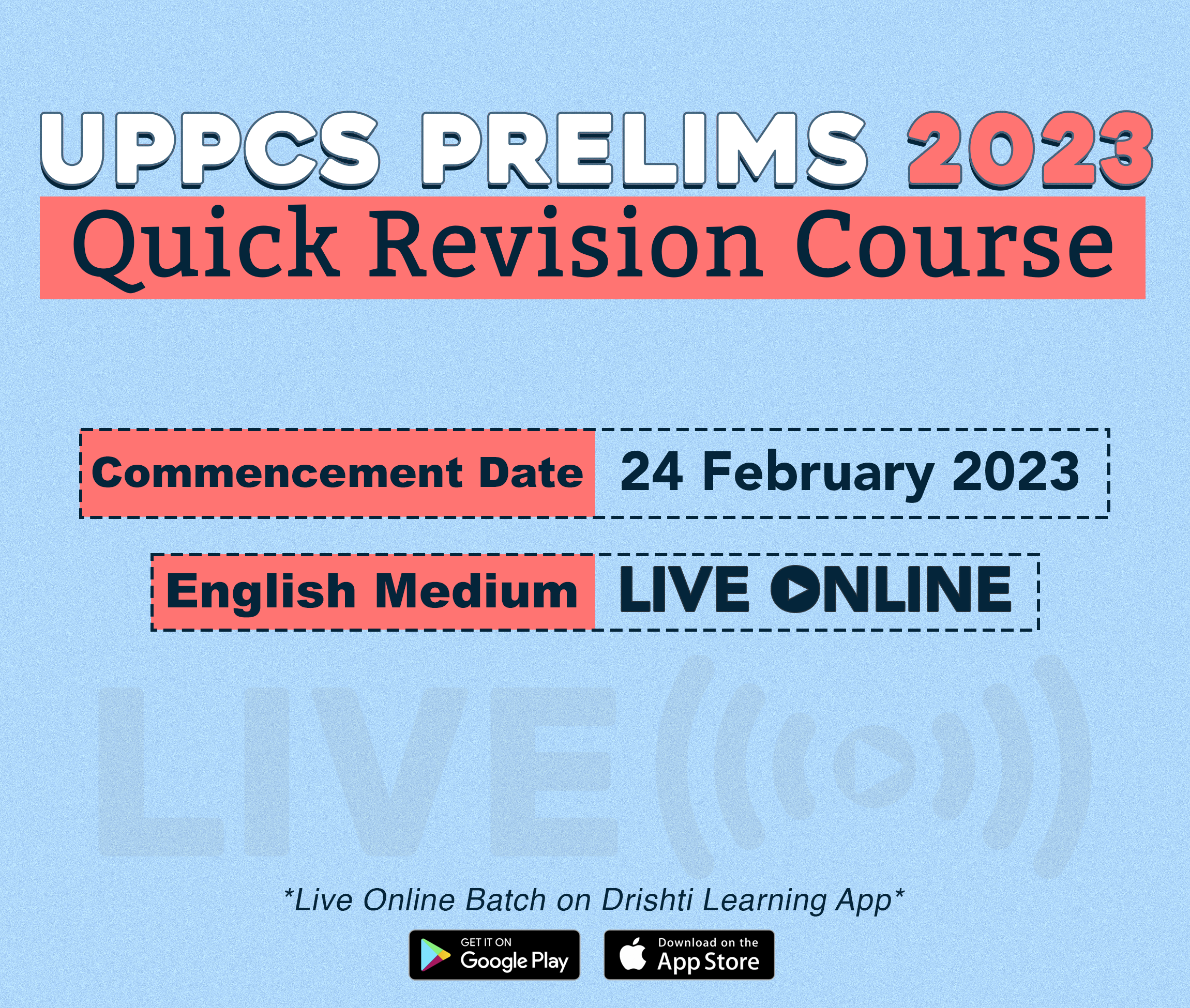
Governance
e-Courts Integrated Mission Mode Project
For Prelims: Supreme Court, e-Filing, e-Courts Integrated Mission Mode Project, National Judicial Data Grid (NJDG)
For Mains: Digitisation of Indian Judiciary: Challenges associated, Solutions
Why in News?
The Government of India has launched the e-Courts Integrated Mission Mode Project in the country for computerization of District and subordinate courts with the objective of improving access to justice using technology.
What is e-Courts Integrated Mission Mode Project?
- About & Implementation:
- As part of the National e-Governance Plan, the project is under implementation since 2007 for Information and Communications Technology (ICT) development of the Indian Judiciary
- e-Courts project is being implemented in association with e-Committee Supreme Court of India and the Department of Justice.
- Phases:
- Phase I: It was implemented during 2011-2015.
- Phase II: It was started in 2015 under which various District & Subordinate courts have been computerised.
What are the Initiatives Taken Under the Project?
- Improvisation of Network: Under the Wide Area Network (WAN) Project, connectivity has been provided to 99.4% of total Court Complexes across India with an improved bandwidth speed.
- Open-Source Software: Case Information Software (CIS) is based on Free and Open-Source Software (FOSS) which has been developed by National Informatics Centre (NIC).
- NJDG Database: National Judicial Data Grid (NJDG) is a database of orders, judgments, and cases, created as an online platform under the eCourts Project.
- It provides information relating to judicial proceedings/decisions of all computerized district and subordinate courts.
- Access to Case Status Information: Open Application Programming Interfaces (APIs) have been introduced in 2020 to allow Central and State Governments and institutional litigants including local bodies to access NJDG data to improve pendency monitoring and compliance.
- 7 platforms have been created to provide real-time information on case status, cause lists, judgements, etc. to lawyers/Litigants.
- In addition, Electronic Case Management Tools (ECMT) have been created with Mobile Apps for lawyers and judges.
- Virtual Courts: 21 Virtual Courts in 17 States/UTs have been operationalized to handle traffic challan cases.
- More than 2.40 crore cases have been handled by 21 virtual courts.
- Video-Conferencing (VC): Video-conferencing (VC) facilities have also been enabled between court complexes and corresponding jails.
- The Supreme Court emerged as a global leader by conducting lakhs of hearings.
- E-filing: New e-filing system has been rolled out for the electronic filing of legal papers with upgraded features. As of 2022, a total of 19 High Courts have adopted the model rules of e-Filing.
- Regarding Summons: National Service and Tracking of Electronic Processes (NSTEP) has been launched for technology enabled process serving and issuing of summons.
- It has currently been implemented in 28 States/ UTs.
- User-friendly Portal: A new “Judgment Search” portal has been started with several user-friendly features. This facility is being provided free of cost to everyone.
- Creating Awareness: Towards creating widespread awareness and familiarization of eFiling and eCourts services, manuals and brochures have been made available in English, Hindi and 11 regional languages for the use of lawyers.
What’s New about Phase III?
- Phase III of the e-Courts Project:
- Draft Vision Document for e-Courts Project Phase III has been finalized and approved by eCommittee, Supreme Court of India.
- It mentions a judicial system that is more affordable, accessible, cost-effective, predictable, reliable, and transparent for every individual who seeks justice or is part of the delivery of justice in India.
- Phase III Mentions Various New Features:
- Digital and Paperless Courts aimed at bringing court proceedings under a digital format in a court;
- Online Court focussing on eliminating the presence of litigants or lawyers in the court;
- Expansion of the scope of Virtual Courts beyond adjudication of Traffic Violations;
- Use of emerging technologies like Artificial Intelligence (AI) and its subsets like Optical Character Recognition (OCR) etc for analysis of case pendency, forecasting future litigation, etc.
What are the Related Concerns and Solutions?
| Concerns | Solutions |
|
|
|
|
|
|
|
|
UPSC Civil Services Examination, Previous Year Questions (PYQs)
Q. With reference to the Indian judiciary, consider the following statements: (2021)
- Any retired judge of the Supreme Court of India can be called back to sit and act as a Supreme Court judge by the Chief Justice of India with the prior permission of the President of India.
- A High Court in India has the power to review its own judgement as the Supreme Court does.
Which of the statements given above is/are correct?
(a) 1 only
(b) 2 only
(c) Both 1 and 2
(d) Neither I nor 2
Ans: (c)

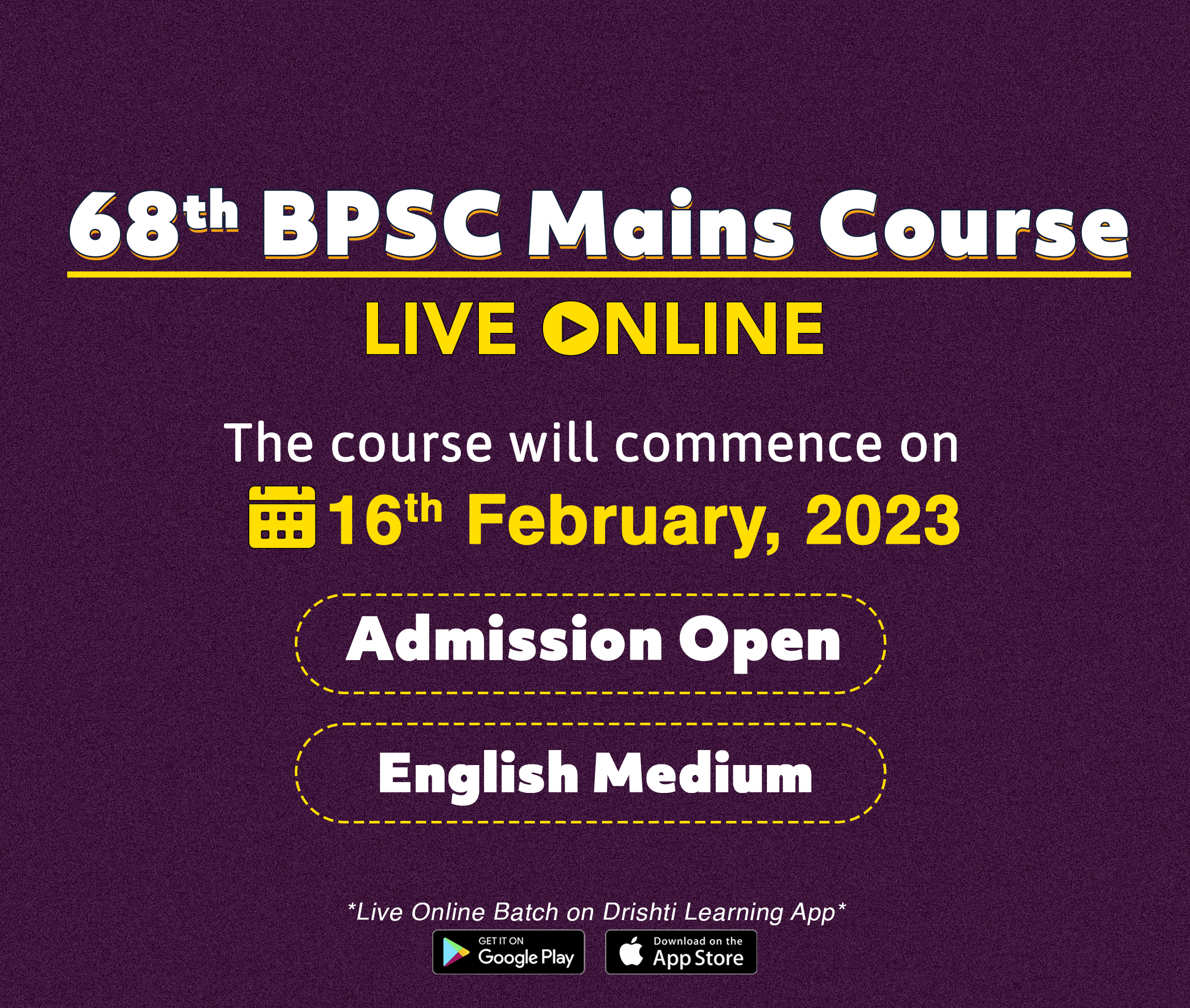
Important Facts For Prelims
Sickle Cell Disease
Why in News?
The Government of India, through the National Health Mission, is supporting the states in their efforts to prevent and manage sickle cell disease.
- In Union Budget 2023-24, the government has announced a mission to eliminate Sickle cell Anaemia by 2047.
What is Sickle Cell Disease (SCD)?
- About:
- SCD is a chronic single gene disorder causing a debilitating systemic syndrome characterized by chronic anaemia, acute painful episodes, organ infarction and chronic organ damage and by a significant reduction in life expectancy.
- Symptoms:
- Symptoms of sickle cell disease can vary, but some common symptoms include:
- Chronic Anaemia: leading to fatigue, weakness, and paleness.
- Painful episodes (also known as sickle cell crisis): these can cause sudden and intense pain in the bones, chest, back, arms, and legs.
- Delayed growth and puberty
- Symptoms of sickle cell disease can vary, but some common symptoms include:
- Treatment:
- Blood Transfusions: These can help relieve anaemia and reduce the risk of pain crises.
- Hydroxyurea: This is a medication that can help reduce the frequency of painful episodes and prevent some of the long-term complications of the disease.
- It can also be treated by bone marrow or stem cell transplantation
- Government Initiatives to Tackle SCD:
- Government has released technical operational guidelines for prevention and control of hemoglobinopathies in 2016 including sickle cell anaemia.
- Integrated centers have also been established in 22 tribal districts for treatment and diagnosis.
- The State Haemoglobinopathy Mission has been established in Madhya Pradesh to address the challenges in screening and management of the disease.
UPSC Civil Services Examination, Previous Year Question (PYQ)
Q. What are the research and developmental achievements in applied biotechnology? How will these achievements help to uplift the poorer sections of society? (2021)


Important Facts For Prelims
India-Kenya Ties
Why in News?
India recently handed over 100 nautical charts to Kenya, the result of a collaborative survey between the navies of both countries of the coastal area near the Lamu Archipelago.
- From India, the survey was conducted by the Indian Navy's National Hydrography Office.
What are the Key Points Related to Kenya?
- Kenya is located in East Africa. Its terrain rises from a low coastal plain on the Indian Ocean to mountains and plateaus at its centre.
- Kenya's location between the Indian Ocean and Lake Victoria means that people from all over Africa and the Middle East have travelled and traded across it for centuries.
- This has created a diverse culture with many ethnic groups and languages.
- Scientists think Northern Kenya and Tanzania may have been the original birthplace of humans.
- The bones of one of the earliest human ancestors ever found were discovered in Kenya's Turkana Basin.
- Lake Turkana, the world's largest desert lake, is part of the Omo-Turkana basin, which stretches into four countries: Ethiopia, Kenya, South Sudan and Uganda.
- UN-Habitat maintains its headquarters at the United Nations Office at Nairobi, Kenya.
How are India’s Relations with Kenya?
- India and Kenya have historical linkages rooted in the well-documented trade in spices.
- In addition to being India’s maritime neighbour, it is also a significant stakeholder in determining the geopolitics of the Western Indian Ocean.
- India has a long-established connection with the African Union of which Kenya is an active member.
- The Kenyan government in 2017, recognized the Indian descent as the 44th tribe in the country.
- Also, till date, a total of 14 Kenyan personnel has undergone courses at the National Institute of Hydrography, Goa under the Indian Technical and Economic Cooperation (ITEC) scheme.
What is the Indian Technical and Economic Cooperation Programme?
- ITEC is the leading capacity building platform of the Ministry Of External Affairs, Government of India.
- Instituted in 1964, ITEC is one of the oldest institutionalised arrangements for international capacity building having trained more than 200,000 officials from 160+ countries in both the civilian and in the defence sector.
- EC offers nearly 10,000 fully-funded in-person training opportunities through nearly 400 courses offered at 100+ eminent institutes in India each year.


Rapid Fire
Rapid Fire Current Affairs
36th Surajkund International Crafts Mela
Recently, the Vice President of India inaugurated the 36th Surajkund International Crafts Mela at Faridabad, Haryana where he urged everyone to consider locally produced handicraft items when looking for gifts to their friends and relatives.
This fair is held every year in the month of February, organised by the Surajkund Mela Authority & Haryana Tourism in collaboration with Union Ministries of Tourism, Textiles, Culture and External Affairs. The aim is to promote the pool of skilled artisans, who used indigenous technology, but were suffering due to the cheaper machine-made imitations.
The North Eastern Region (NER) is the Theme State for the year 2023 as the NER is a very important stakeholder in India’s Look-East & Act-East Policy. The partner country for year 2023 is Shanghai Cooperation Organisation (SCO).
The Union Budget 2023-24 has also envisaged the PM Vishwakarma Kaushal Samman, to help craftsmen expand the reach and quality of their creations. Other initiatives include Mudra Yojana, One District, One Product and Unity Malls, etc.
Read More - Surajkund International Crafts Mela
VIHANGAM Drone Technology
Mahanadi Coalfields Ltd (MCL), the premier CPSE (Central Public Sector Enterprise) under the Ministry of Coal has introduced drone technology in coal mines by launching a web- based portal VIHANGAM along with a drone and ground control system.
The portal allows an authorised person to access real time drone video from the mine. There is a control station that flies the drone which can be operated anywhere via the portal. This pilot project is currently operational at Bhubaneswari and Lingaraj opencast mines of Talcher Coalfields (Odisha).
Drone technology is being used for environmental monitoring and photogrammetric mapping of mine for digitalisation of the mining process. MCL has also introduced a Robotic Nozzle Water Sprayer in its coal stockyard to carry out difficult jobs like firefighting and dust suppression.
Mahanadi Coalfields Ltd (MCL) contributes more than 20% of the total coal produced in India.
Read More - VIHANGAM, Drone Technology
Operation SADBHAVANA
As part of ‘Operation SADBHAVANA’, Indian Army is undertaking multiple welfare activities such as Army Goodwill Schools, Infra-development projects, education tours etc. for the children living in remote areas of UT of Ladakh.
The Indian Army is presently running 7 Army Goodwill Schools under ‘Operation SADBHAVANA’ in Ladakh Region. More than 2,200 Students are currently studying in these schools.
Under this initiative (in FY 22-23), medical camps, veterinary camps, provision of medical equipment, upgradation of medical infrastructure and staffing of Medical Aid Centres have been provided at various remote locations in Ladakh. Women in remote areas of Ladakh are also being inducted in Vocational Training Centres, Women Empowerment Centres and Computer Centres organised and funded through SADBHAVNA.
Operation SADBHAVANA (Goodwill) is a unique humane initiative undertaken by Indian Army and formalised in 1990s in the erstwhile State of J&K to address aspirations of people affected by scrooge of terrorism.
FAO’s Findings on World Food Prices
As per the Food and Agriculture Organization (FAO), the World food prices fell in January 2023 for the 10th consecutive month. The FAO Food Price Index, which tracks the most globally traded food commodities, averaged 131.2 points in Jan’23 against 132.2 for Dec’23 - the lowest since Sept 2021.
In separate cereal supply and demand estimates, FAO raised its forecast for global cereal production in 2022 to 2.765 billion tonnes from a previous estimate of 2.756 billion tonnes. International wheat prices declined 2.5% as production in Australia and Russia increased more than expected.
FAO is a UN specialised agency that leads international efforts to defeat hunger. It is one of the UN food aid organisations based in Rome (Italy). Its sister bodies are the World Food Programme and the International Fund for Agricultural Development (IFAD).
Read More - Food and Agriculture Organization's (FAO), World Food Price Index: FAO



